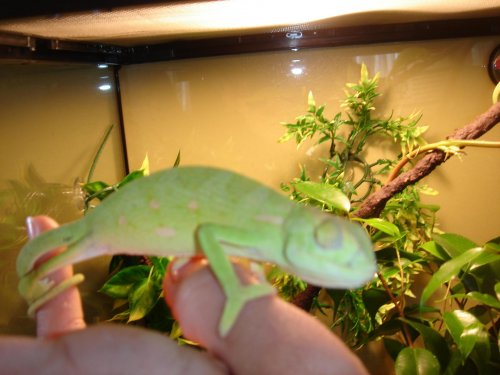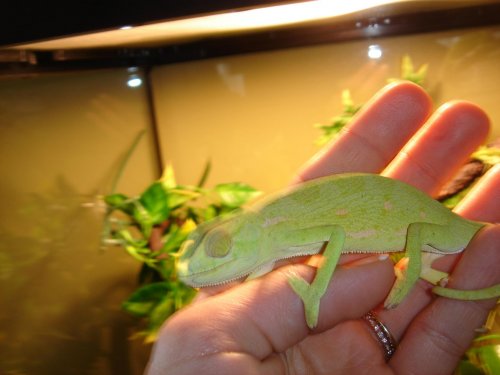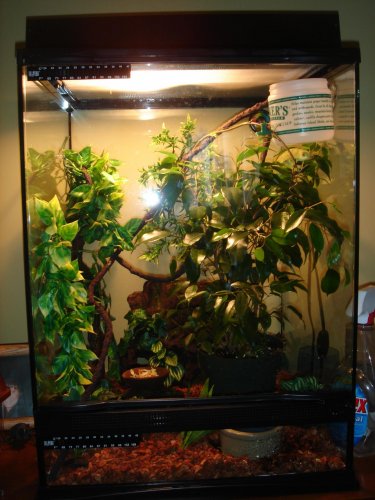petedoggg
New Member
Help I have two chameleons that are about 7 months old after reading about chameleons i'm assuming they are females I dont know what to do they wont eat and i'm scared bc since i got them 3 days ago one has eaten 5 and the other only 2 and I don't want anything to happen to them but these are my first chameleons and i have no clue what i'm doing please help they are in a very large cage with fake greenery and also a ficus tree plenty of room to explore temp at around 80-85 at the top and 70-75 on bottom humidity between 30-50% Im also offering lettuce and carrots and they wont touch them!!! Help Help Help what am i doing wrong???
Here are some pics........


Here are some pics........








